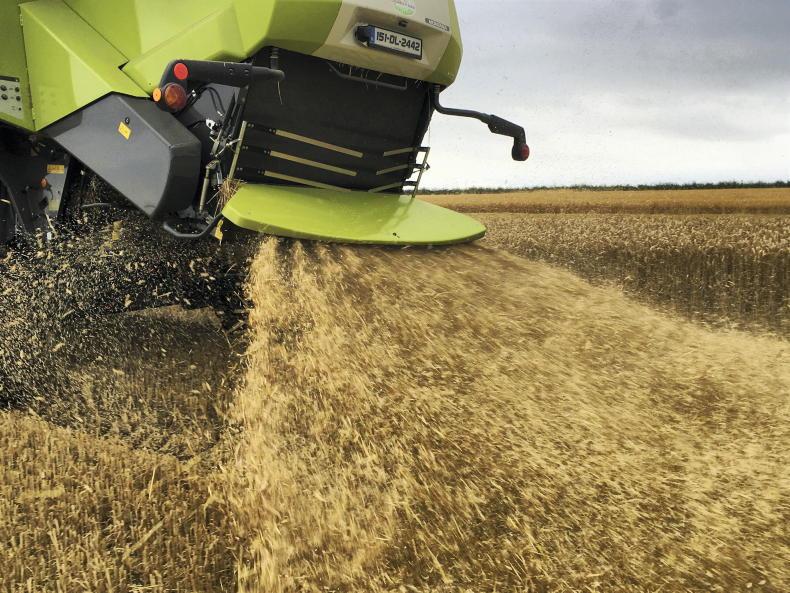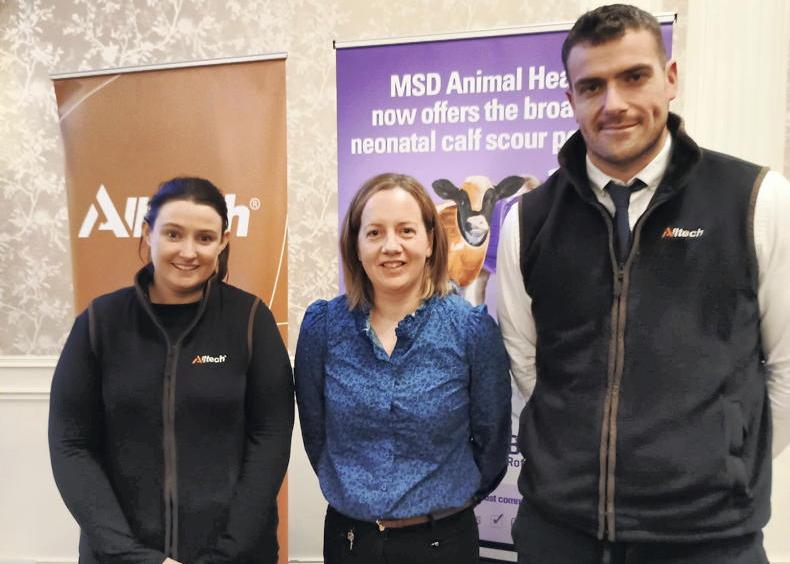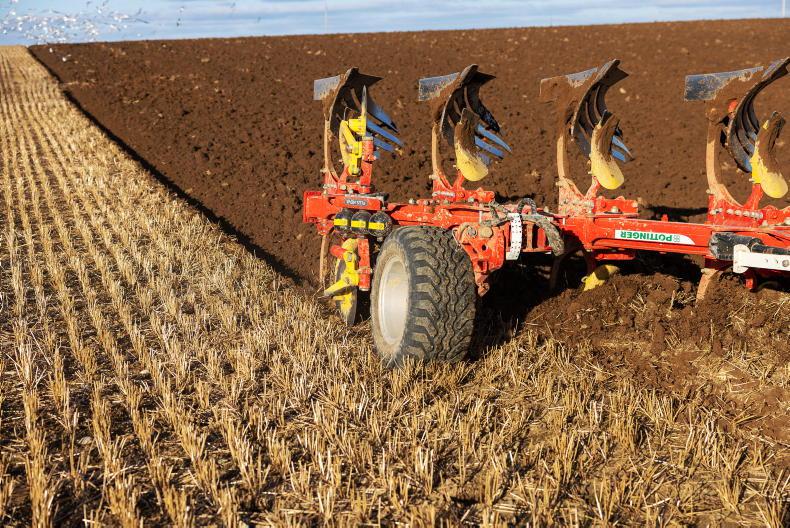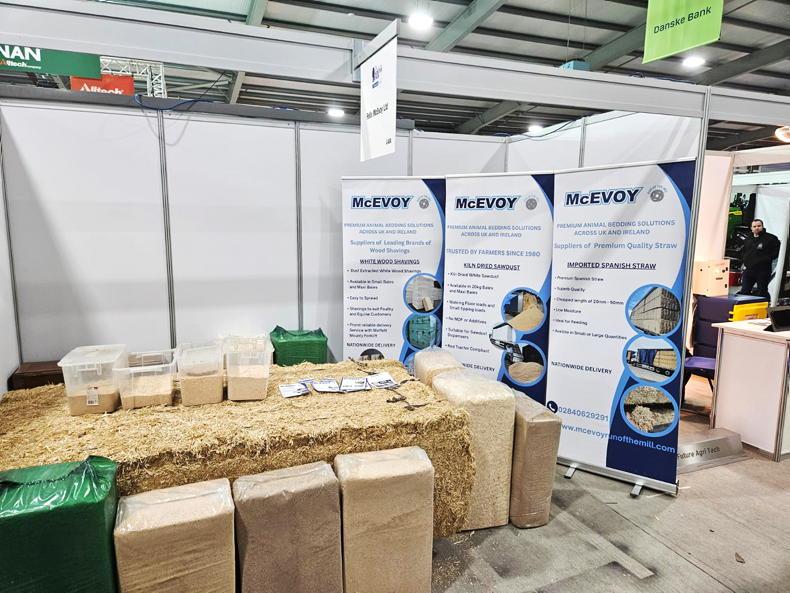The recent ITLUS seminar gave the experiences of a number of growers who have been chopping and incorporating straw for a number of years and their experiences were all favourable.
What those growers had actually done was reported on last week and on the page opposite. But there are a number of basic principles that are so much taken for granted that they were not even mentioned in the presentations.
These are still important issues for anyone who might be chopping straw for the first time this season.
Any drive towards chopping is being driven by the Straw Incorporation Measure (SIM) payment and that is fundamentally a good thing.
Chopping and incorporating straw is about carbon storage in the soil through the putting back of additional organic matter. But it is also about improving soil structure, getting better water percolation, getting rid of ponds, increasing soil moisture storage, making your land easier to till and increasing field yields.
The biggest benefit is seen by chopping headlands and many growers have become very aware of that benefit in recent years
Some may choose to not believe many of these benefits or are more likely to ignore them in favour of badly needed income. Ironically, the income benefit from grain yield through improving the soil will be greater than the value of the straw, but it takes a few years to get there.
The biggest benefit is seen by chopping headlands and many growers have become very aware of that benefit in recent years.
Travelling around the country in recent weeks, the problem with compaction in fields and headlands is increasingly obvious. These problems cost yield and they are very expensive to ignore. And they will always tend to be worse on light land than on heavy land, especially with spring cropping.
One of the benefits of straw incorporation outlined by all the farmers was the savings on diesel that become apparent after just a few years. This is a direct consequence of two things happening:
The presence of straw in the soil, which makes it easier to break up.The improving structure of the soil.These benefits are not instant but they can generally be seen within three to five years of starting to chop.
One of the problems sometimes associated with chopping straw is an increasing issue with slugs. And it could be a problem if straw is not incorporated ahead of ploughing.
If you chop straw and do not mix it with soil prior to ploughing, it will result in a sandwich of straw between the turned furrows, which can act as motorway for slugs. By mixing the chopped straw with a shallow cultivation before ploughing you:
Get rid of the sandwich.The mixed soil and straw should fall to the bottom of the furrow during ploughing.For this reason, mixing or incorporation of the chopped straw is an essential part of the first few years of straw incorporation.
When straw has been incorporated for a few years, you build up the earthworm population in the ground and by about the fifth year you will be left wondering where the bulk of the straw has gone after about three weeks post-harvest.
Once you have the essential population of earthworms built up in the soil, they will quickly pull the straw off the surface, making the land easier to manage.
At that point, min-till would be a real and safe establishment option and indeed there would be no real need to incorporate. This is especially important for anyone moving to direct drilling.
For anyone putting in a green cover ahead of a spring crop, the earlier planting combined with the better structure would further help the soil making it easier to manage.
The impact on soil potash (K)
The removal or straw mines a lot of potash from the soil and that is why fertiliser recommendations differentiate between straw removed and straw incorporated.
The Teagasc nutrient advice book states that the K removal per tonne of grain produced is 4.7kg/t of grain where the straw is not removed and this is more than doubled where the straw is removed.
The potash offtake per tonne of grain, where the straw is removed, is 9.8kg, 11.4kg and 14.4kg for winter wheat and barley, spring wheat and barley and oat crops, respectively.
The impact on phosphorus (P) offtake is much lower because the bulk of P removal goes off in the grain rather than the straw – 3.4kg P/t where the straw is not removed versus 3.8kg P/t for all cereals where the straw is removed.
So straw incorporation means potential savings in K requirement over time, but this impact is not instant.
In my experience, it can take eight to 10 years before you see soil indices for K increasing, even where K continues to be applied at the rates applicable to straw removal during those years.
[...] it is money in the bank once the soil begins to hit equilibrium stage
The most likely reasons for this are because the straw is slow to break down fully to release its nutrients and when they are released, it is inevitable that the increasing numbers of soil microorganisms grab most of the K before the roots can get it. But it is money in the bank once the soil begins to hit equilibrium stage.
The same is likely to be true of all other nutrients also, including micronutrients.
These will also be present in straw but, again, they will be consumed by the soil biology for a number of years until your land forms a new equilibrium.
But, in the meantime, you should be seeing higher average field yields.
One of the conditions of the new straw incorporation measure (SIM) is that the straw be incorporated as well as chopped.
There are many ways that this can be done – discs or tines – but it remains important to keep the incorporation as shallow as is practically possible:
The straw will be more effective at building earthworm numbers faster where it is left close to the surface.You do not have too much loose soil in the event of a wet backend.Either discs or tines can do an adequate job of incorporation but you do need to get a good mix to get the degradation process under way.
Leaving the cultivated ground loose should also help in getting rid of problems like slugs and leatherjackets where the soil can dry out and help to desiccate their eggs to remove the next generation.
Consolidation post-cultivation will help these to survive by trapping them in moisture but it would help to get weed and volunteer seed germination going quicker.
There are many advantages to incorporating straw but it must be done correctly to avoid problems. Good incorporation is essential, especially in the early years.Incorporated straw will store carbon, improve soil structure, improve drought resilience, reduce diesel requirement, improve water percolation and increase grain yields.Improvement in the soil K index is likely to take a number of years.
The recent ITLUS seminar gave the experiences of a number of growers who have been chopping and incorporating straw for a number of years and their experiences were all favourable.
What those growers had actually done was reported on last week and on the page opposite. But there are a number of basic principles that are so much taken for granted that they were not even mentioned in the presentations.
These are still important issues for anyone who might be chopping straw for the first time this season.
Any drive towards chopping is being driven by the Straw Incorporation Measure (SIM) payment and that is fundamentally a good thing.
Chopping and incorporating straw is about carbon storage in the soil through the putting back of additional organic matter. But it is also about improving soil structure, getting better water percolation, getting rid of ponds, increasing soil moisture storage, making your land easier to till and increasing field yields.
The biggest benefit is seen by chopping headlands and many growers have become very aware of that benefit in recent years
Some may choose to not believe many of these benefits or are more likely to ignore them in favour of badly needed income. Ironically, the income benefit from grain yield through improving the soil will be greater than the value of the straw, but it takes a few years to get there.
The biggest benefit is seen by chopping headlands and many growers have become very aware of that benefit in recent years.
Travelling around the country in recent weeks, the problem with compaction in fields and headlands is increasingly obvious. These problems cost yield and they are very expensive to ignore. And they will always tend to be worse on light land than on heavy land, especially with spring cropping.
One of the benefits of straw incorporation outlined by all the farmers was the savings on diesel that become apparent after just a few years. This is a direct consequence of two things happening:
The presence of straw in the soil, which makes it easier to break up.The improving structure of the soil.These benefits are not instant but they can generally be seen within three to five years of starting to chop.
One of the problems sometimes associated with chopping straw is an increasing issue with slugs. And it could be a problem if straw is not incorporated ahead of ploughing.
If you chop straw and do not mix it with soil prior to ploughing, it will result in a sandwich of straw between the turned furrows, which can act as motorway for slugs. By mixing the chopped straw with a shallow cultivation before ploughing you:
Get rid of the sandwich.The mixed soil and straw should fall to the bottom of the furrow during ploughing.For this reason, mixing or incorporation of the chopped straw is an essential part of the first few years of straw incorporation.
When straw has been incorporated for a few years, you build up the earthworm population in the ground and by about the fifth year you will be left wondering where the bulk of the straw has gone after about three weeks post-harvest.
Once you have the essential population of earthworms built up in the soil, they will quickly pull the straw off the surface, making the land easier to manage.
At that point, min-till would be a real and safe establishment option and indeed there would be no real need to incorporate. This is especially important for anyone moving to direct drilling.
For anyone putting in a green cover ahead of a spring crop, the earlier planting combined with the better structure would further help the soil making it easier to manage.
The impact on soil potash (K)
The removal or straw mines a lot of potash from the soil and that is why fertiliser recommendations differentiate between straw removed and straw incorporated.
The Teagasc nutrient advice book states that the K removal per tonne of grain produced is 4.7kg/t of grain where the straw is not removed and this is more than doubled where the straw is removed.
The potash offtake per tonne of grain, where the straw is removed, is 9.8kg, 11.4kg and 14.4kg for winter wheat and barley, spring wheat and barley and oat crops, respectively.
The impact on phosphorus (P) offtake is much lower because the bulk of P removal goes off in the grain rather than the straw – 3.4kg P/t where the straw is not removed versus 3.8kg P/t for all cereals where the straw is removed.
So straw incorporation means potential savings in K requirement over time, but this impact is not instant.
In my experience, it can take eight to 10 years before you see soil indices for K increasing, even where K continues to be applied at the rates applicable to straw removal during those years.
[...] it is money in the bank once the soil begins to hit equilibrium stage
The most likely reasons for this are because the straw is slow to break down fully to release its nutrients and when they are released, it is inevitable that the increasing numbers of soil microorganisms grab most of the K before the roots can get it. But it is money in the bank once the soil begins to hit equilibrium stage.
The same is likely to be true of all other nutrients also, including micronutrients.
These will also be present in straw but, again, they will be consumed by the soil biology for a number of years until your land forms a new equilibrium.
But, in the meantime, you should be seeing higher average field yields.
One of the conditions of the new straw incorporation measure (SIM) is that the straw be incorporated as well as chopped.
There are many ways that this can be done – discs or tines – but it remains important to keep the incorporation as shallow as is practically possible:
The straw will be more effective at building earthworm numbers faster where it is left close to the surface.You do not have too much loose soil in the event of a wet backend.Either discs or tines can do an adequate job of incorporation but you do need to get a good mix to get the degradation process under way.
Leaving the cultivated ground loose should also help in getting rid of problems like slugs and leatherjackets where the soil can dry out and help to desiccate their eggs to remove the next generation.
Consolidation post-cultivation will help these to survive by trapping them in moisture but it would help to get weed and volunteer seed germination going quicker.
There are many advantages to incorporating straw but it must be done correctly to avoid problems. Good incorporation is essential, especially in the early years.Incorporated straw will store carbon, improve soil structure, improve drought resilience, reduce diesel requirement, improve water percolation and increase grain yields.Improvement in the soil K index is likely to take a number of years. 









SHARING OPTIONS